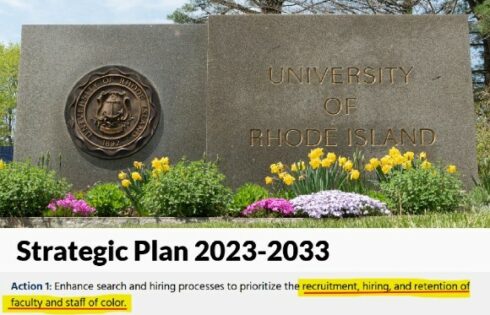
A scholar who has studied adolescents for more than 20 years says there’s one trend that continues to be proven true even if it defies conventional wisdom.
And that is there is a higher amount of illicit drug use in upper-middle class students than
students living in low-income neighborhoods. What’s more, affluent kids grapple with higher levels of anxiety and depression than their poorer peers.
So says Dr. Suniya Luthar, a psychology professor at Arizona State University and founder of
Authentic Connections, a nonprofit that works to help students avoid such pitfalls through
strong relationships with supportive adults.
While it might be counter-intuitive to suggest that rich kids do more drugs and experience more stress, years of studies back that up, she told The College Fix.
Students from wealthy families use more drugs because they have the financial means coupled with a high level of pressure to perform well in school and in other arenas, such as athletics. What’s more, she said, so many of their friends do drugs too, so there’s a peer pressure aspect to it.
“In short, you’ve got a bunch of different factors coming together. You’ve got the money, you’ve got the pressure, you’ve got the self-medication, social aspect of high use by peers,” Luther said in a recent telephone interview.
KQED reports that her most recent study, funded by the National Institutes of Health, “found that rates of substance abuse remain high among upper-middle-class kids, as they enter early adulthood. The alcohol or drugs are a form of self-medication.”
Luther told the news outlet that “what we’ve found is that kids in high-achieving, relatively
affluent communities are reporting higher levels of substance use than inner-city kids and levels of anxiety and depressive symptoms are also commensurate — if not greater.”
Gowing evidence- high substance abuse among high-achieving, mostly affluent teens. https://t.co/hfp8ugcJE9
— Suniya Luthar (@suniya_luthar) August 9, 2018
But even back in 1999 she was finding similar results. Her “Contextual factors in substance use: A study of suburban and inner-city adolescents” survey found that “suburban youth reported significantly higher levels of substance use than inner-city youth.”
That study surveyed nearly 500 high school sophomores of both genders and a variety of ethnicities from two different communities in the Northeast. About half were from a prestigious suburban school and the rest attended a low-ranked inner-city high school.
“Substance use levels among affluent, suburban teenagers were significantly higher than among their inner-city counterparts and, as hypothesized, were more strongly related to their self-reported maladjustment,” the study stated.
“Given their greater financial resources, suburban youngsters may simply have had more cash readily available to purchase drugs,” it added. “Secondly, suburban youth may have been less afraid to experiment with drugs than inner-city teens, who are surrounded by many illustrations of the perils of drug use in their everyday lives. … [And] many inner-city youths are motivated to remain abstinent because they have observed serious effects of long-term drug use among family members and friends in their communities.”
Ultimately, the pressure to exceed and outdo one another in academics and relieve anxiety and stress all played a role in the ongoing findings, Luthar told The Fix.
And that’s not all.
“Another important thing is peer groups norms. Among peers it [substance use] is normative. It is unusual to have a party where there isn’t drugs and alcohol,” she said. “The norm is to have those present. So, the peer groups are another factor that helps to accentuate or increase the use of substances.”
“Also, there are sometimes parents in these communities that tend to be a little laid back … in the sense of saying, ‘kids will be kids, it’s a little weed, everybody does it’ and those parents do tend to be more laid back about the consequence.”
To combat these problems, Luthar’s Authentic Connections nonprofit works to teach parents and educators on how to have healthy relationships with adolescents that help them avoid pitfalls, which she has termed “resilience,” or doing well in the face of life’s adversities.
MORE: Slutty sheep: Veteran academics warn college students are going off the rails
IMAGE: Pressmaster/Shutterstock
Like The College Fix on Facebook / Follow us on Twitter






Please join the conversation about our stories on Facebook, Twitter, Instagram, Reddit, MeWe, Rumble, Gab, Minds and Gettr.